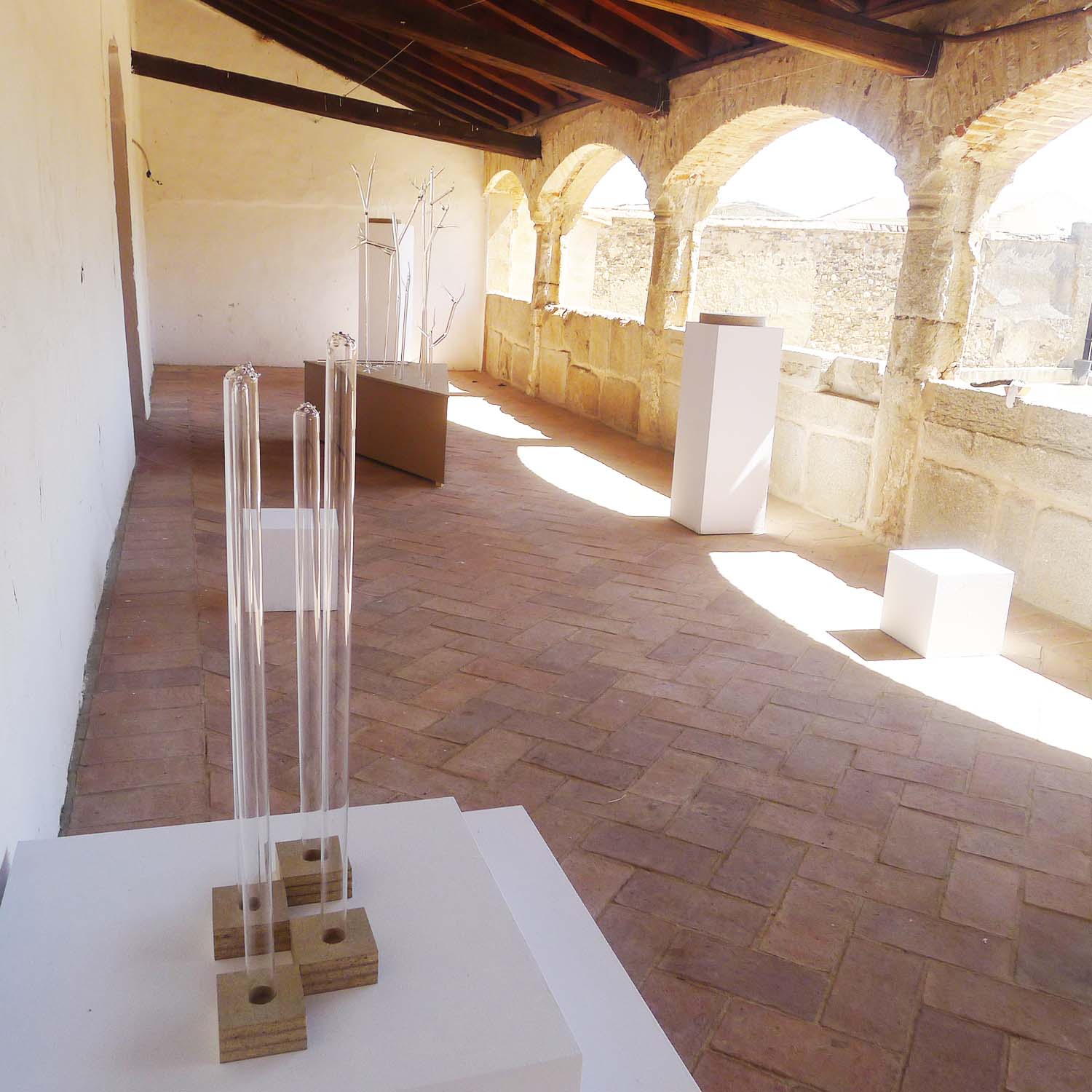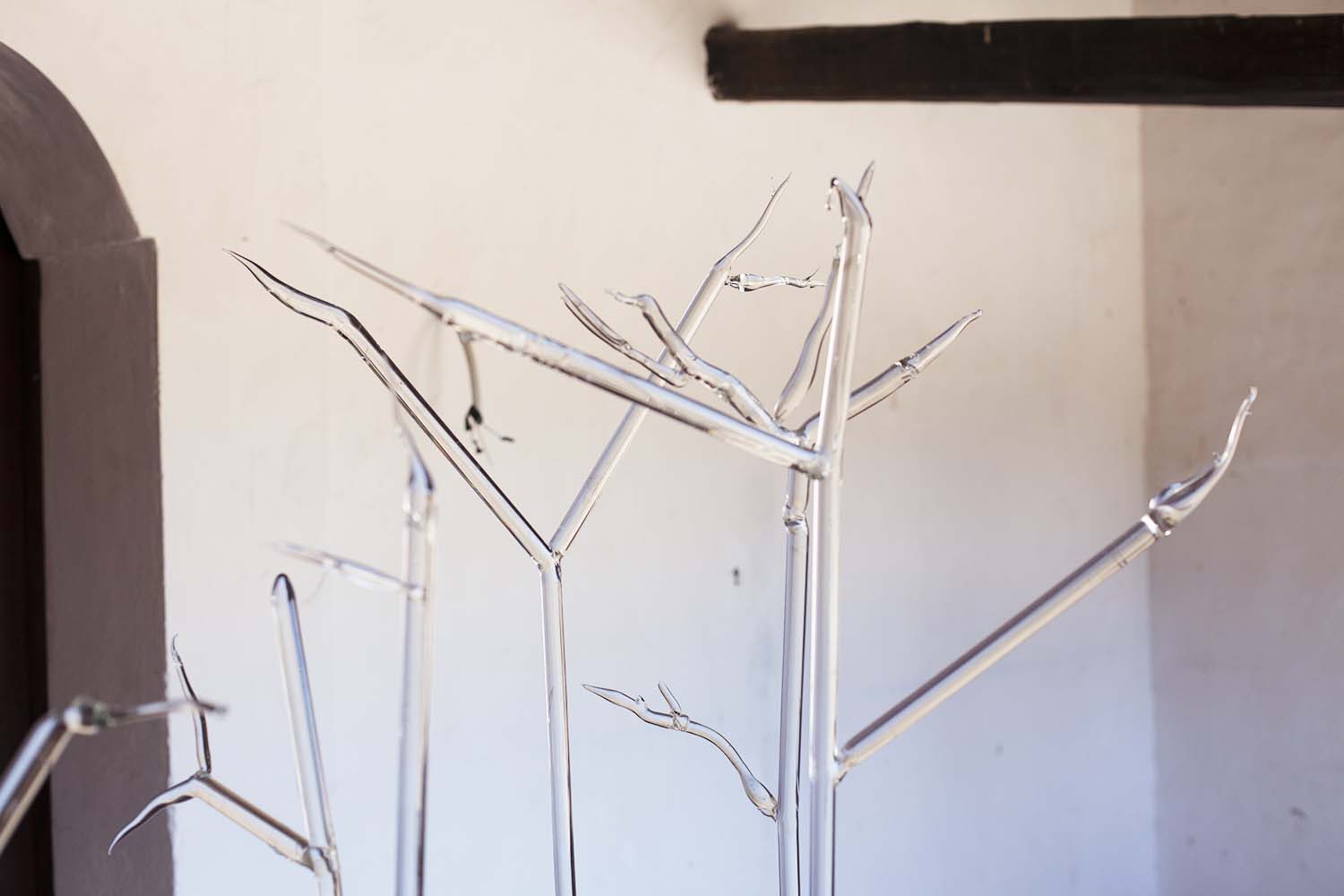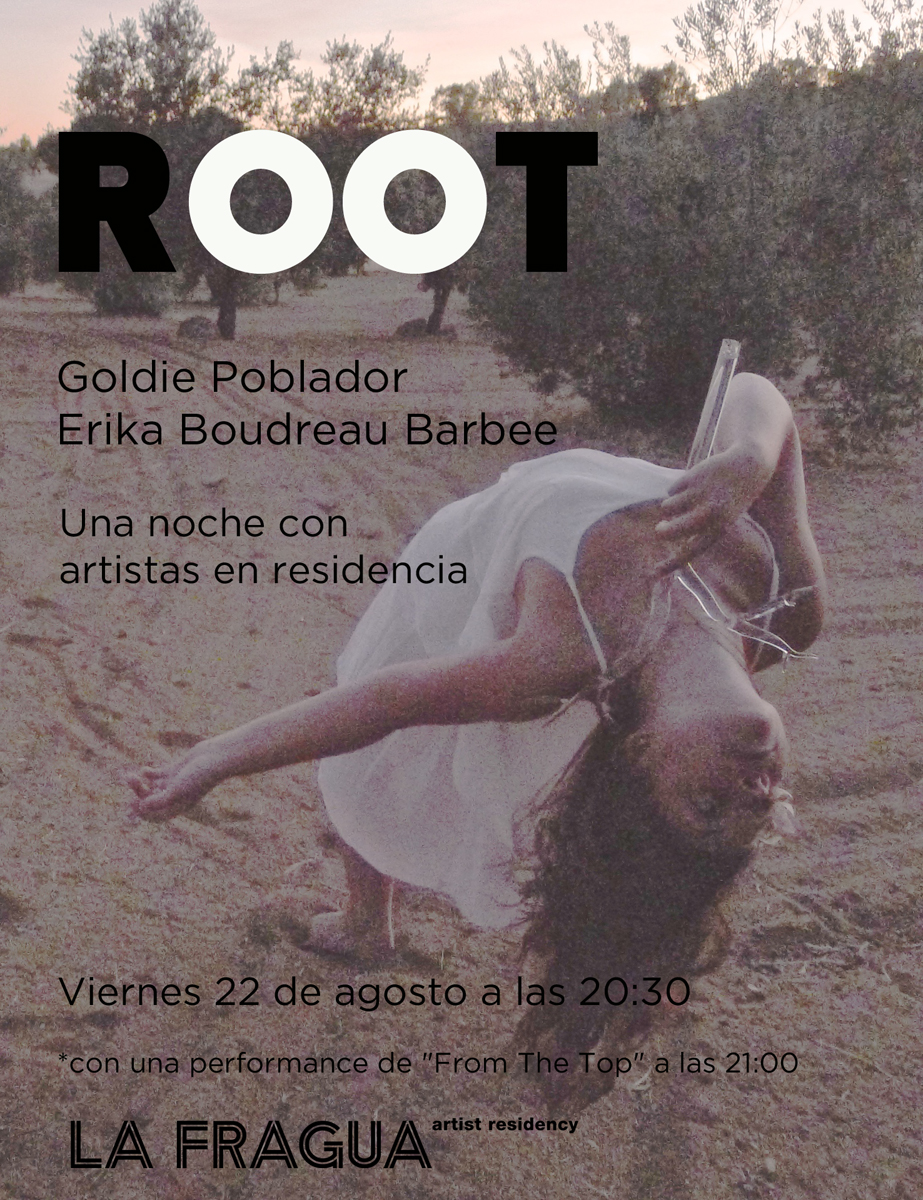

















Date: June 2014
Medium: Glass, Wood, Scent
Created in the La Fragua Artist Residency
Photos by Max Dorsogna
This body of work is derived from the artist’s past research in the culture of indigenous tribes in the Philippines and their intimate relationship with nature. The title of this exhibition means the dream of Maria. It is purposefully a mix of Filipino and Spanish to allude to the underlying history of the Philippines and Spain. Maria Makiling, the female goddess of art in Philippine folklore, is a character that was embodied during the creation of this series of work since as an artist I came to La Fragua to have an uninterrupted life that was deeply rooted in nature. It borders on science, religion and astrology and the medicinal and fictional relationship of nature to the human body. I installed three supporting scents in the space – orange douce, patchouli and the leaf of the camphor plant. The sweet orange I found would speak of the friendly nature of the town, the patchouli reflected the farm of Andres, a farmer who I got to know during the residency. The camphor leaves were chosen for its calming and healing properties that reflect the nature of my time in Belalcazar.
Before arriving in Belalcazar, I felt a lack of clarity and a great sense of anxiety that was a result of a very fast paced and highly competitive life. The value of rest and contemplation proved to be vital to my artistic practice and my satisfaction with my work. The work also references the writings of the Dalai Llama, who strongly believed that before making decisions in life, one must ask oneself if those decisions will fundamentally lead to happiness. It is common to think that more money and objects would lead to a happier life. There can be a profound sense of happiness felt from the joy of enjoying the scents of a freshly prepared meal, from eating vegetables that are made from months of hard work of caring for the plants. After being able to experience planting methods and farming, I found myself having a more profound relationship to the cycles of nature in this way.
Also, I was able to contemplate on change. The piece “Ang Buwan ng mga Ibon” is a series of feathers encased in glass. Glass and feathers are ultimately both fragile objects. I wanted to depict a common thing that was seen in the village into something precious.

